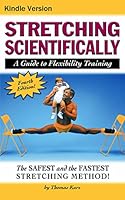Improve Flexibility with Research-Supported Stretching Protocols
hubermanlab.comSaved by Nicolay Gerold
Improve Flexibility with Research-Supported Stretching Protocols
Saved by Nicolay Gerold

In terms of static stretching intensity is normally stipulated in terms of the perceived level of pain (e.g. “stretch until a point of mild discomfort”) whereas volume is generally specified by time. A common guideline is to hold a stretch for 10 to 30 seconds and then maybe to repeat the stretch. There are 2 principal ways in which stretching can
... See moreIn terms of static stretching intensity is normally stipulated in terms of the perceived level of pain (e.g. “stretch until a point of mild discomfort”) whereas volume is generally specified by time. A common guideline is to hold a stretch for 10 to 30 seconds and then maybe to repeat the stretch. There are 2 principal ways in which stretching can
... See moreThe idea that flexibility is limited by the nervous system is supported by research showing increases in flexibility from stretching are likely caused by increased stretch tolerance, rather than increased length of the muscle.